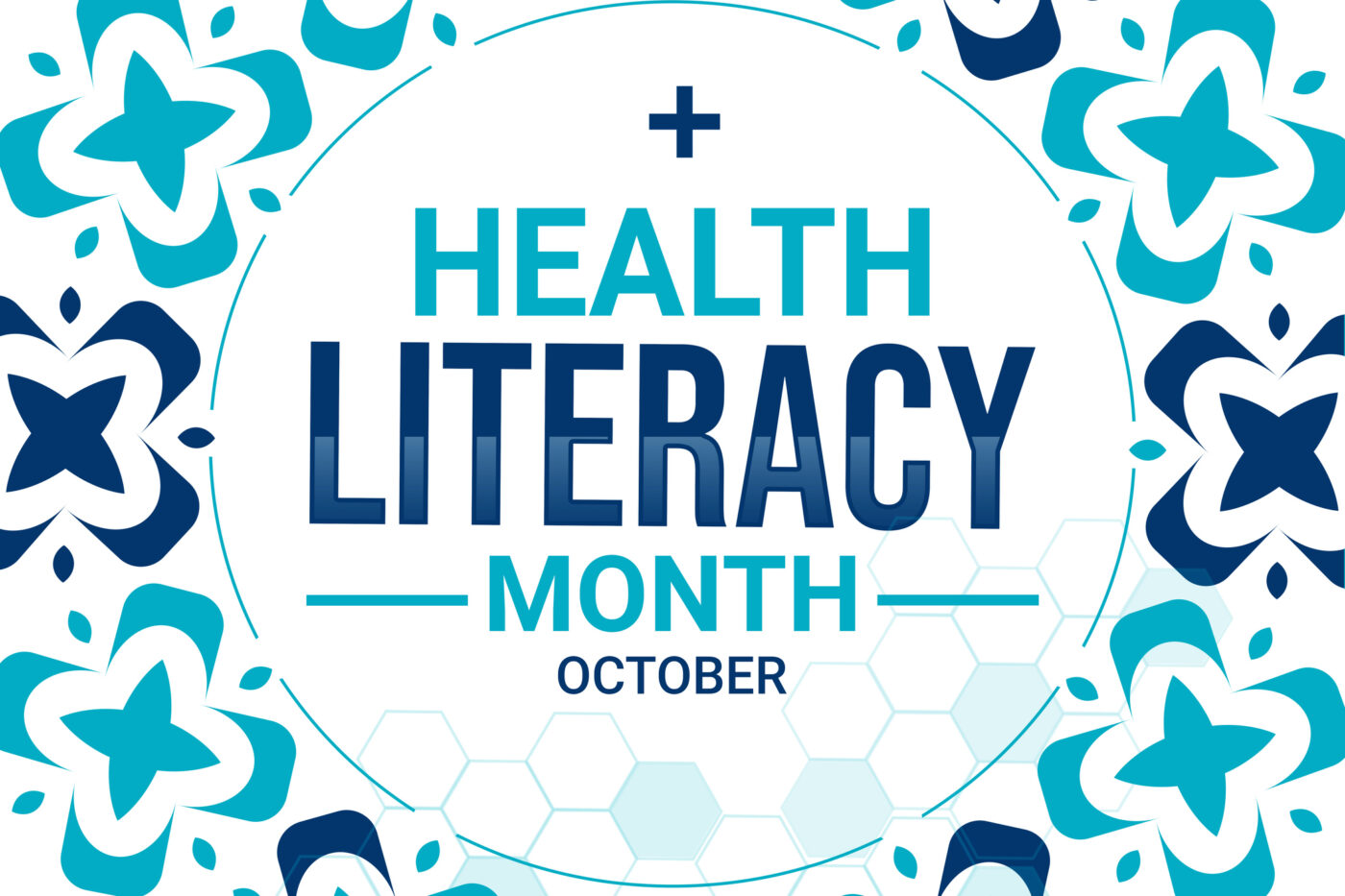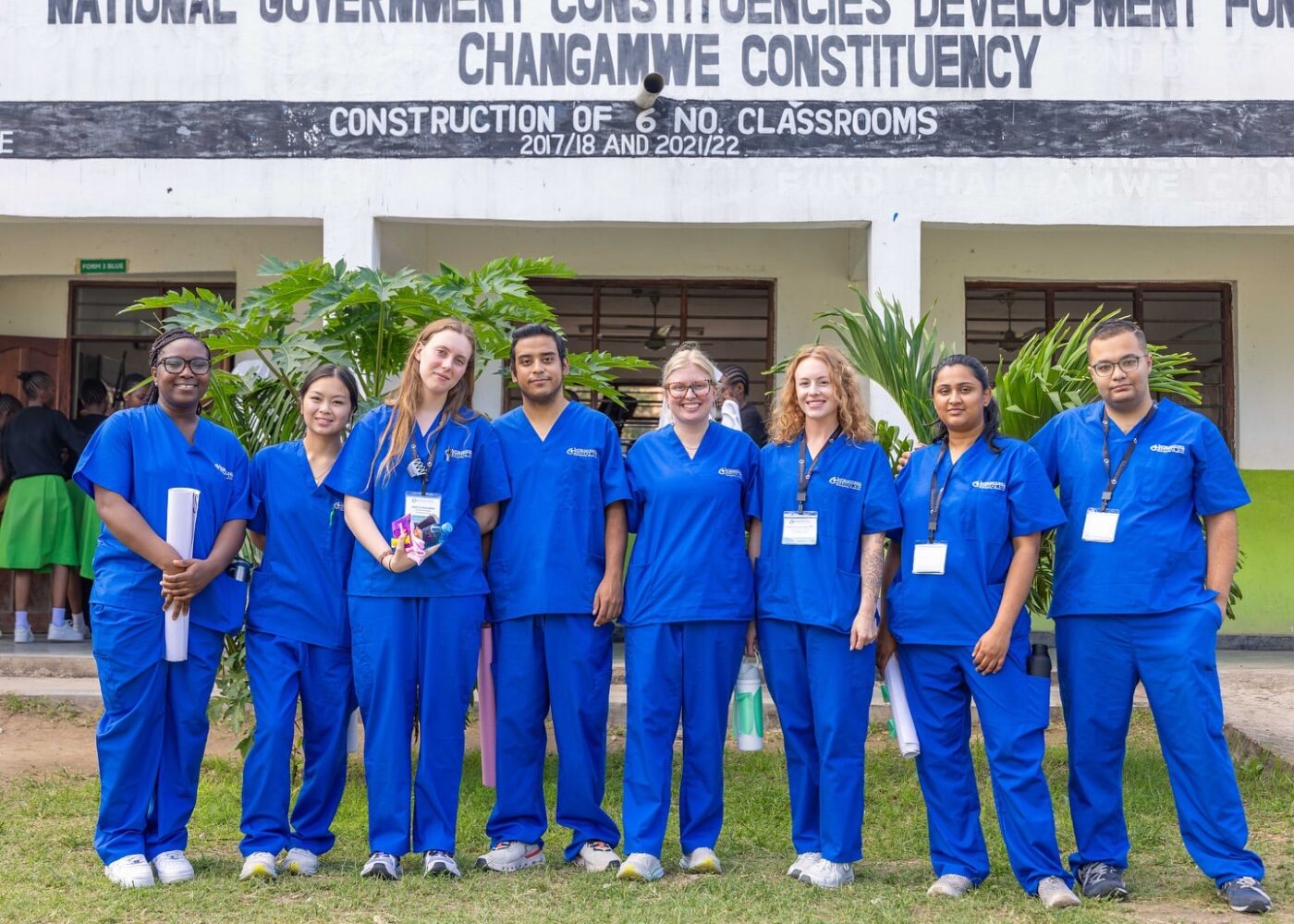Meet James, a dedicated community member who noticed that many of his neighbors struggled to understand basic health information. Determined to make a difference, he organized a local workshop to teach people how to read nutrition labels and understand prescription instructions. His efforts led to a more informed community that made healthier choices and improved overall well-being. James’s story illustrates the powerful impact one individual can have on promoting health literacy locally.
Health literacy is more than a public health buzzword—it’s a crucial part of making healthcare work effectively for everyone. Promoting health literacy means ensuring that individuals and communities understand and use health information to make informed decisions, manage health conditions, and live healthier lives. The local impact of health literacy cannot be overstated. When communities become knowledgeable about health, they take better care of themselves and each other. In this article, we’ll explore practical ways you can become a local health literacy advocate and make a tangible difference in your community.

Local Health Literacy Challenges
Health literacy refers to the ability to access, understand, and use information to make informed health decisions. It involves skills in reading, listening, analyzing, and decision-making, all of which are essential for navigating the healthcare system effectively. When individuals lack health literacy, they are at greater risk of poor health outcomes, increased healthcare costs, and reduced quality of life.
In our communities, barriers to health literacy can include complex medical terminology, cultural and language differences, and limited education resources. The use of jargon can make health information difficult to understand, while cultural and language differences can lead to miscommunication. Additionally, a lack of access to educational materials or health literacy programs can further exacerbate these challenges.
Consider your own community: how many people struggle to understand medical instructions or prescription labels?
How many avoid seeking healthcare simply because they feel overwhelmed by the complexities of the healthcare system?
Health literacy can make all the difference in empowering individuals to take charge of their well-being and reducing the burden on healthcare facilities.
Impact of Low Health Literacy
Low health literacy has significant consequences for individuals and communities. Individuals with low health literacy are more likely to experience increased hospitalizations, complications from chronic diseases, and a reduced quality of life. Misunderstanding dosage instructions or the purpose of medications can lead to improper use, adverse interactions, or ineffective treatment. Low health literacy also often leads to higher healthcare utilization, including unnecessary emergency visits and longer hospital stays, placing a financial burden on both individuals and the healthcare system.

General Health Literacy Statistics
Health literacy is a significant issue that affects millions of people across the United States. According to the National Assessment of Adult Literacy, only 12% of U.S. adults have proficient health literacy, meaning they have the ability to understand and effectively use health information to make informed decisions. Approximately 36% of adults have basic or below-basic health literacy levels, which significantly limits their ability to navigate the healthcare system, understand medical instructions, and manage chronic conditions effectively. Trends in health literacy levels over time show a concerning lack of improvement. Despite efforts to promote health education, the percentage of adults with proficient health literacy has remained relatively stagnant over the years. This suggests that more targeted and effective interventions are needed to address the underlying causes of low health literacy.
The correlation between low health literacy and poor health outcomes is well-documented. Individuals with low health literacy are more likely to suffer from chronic diseases such as diabetes, heart disease, and hypertension. For instance, people with diabetes who have limited health literacy often struggle to understand how to manage their condition, leading to poor glycemic control and an increased risk of complications. Similarly, low health literacy is associated with higher rates of heart disease, as individuals may not fully understand the importance of lifestyle modifications or how to adhere to prescribed treatment plans.
Low health literacy also contributes to increased emergency room visits and hospitalizations. When individuals do not understand how to manage their health or when to seek preventive care, they are more likely to rely on emergency services for conditions that could have been managed through routine care. This not only affects the individual’s health but also places a strain on healthcare resources. Furthermore, low health literacy impacts adherence to medication regimens. Individuals with limited understanding of their prescriptions may take medications incorrectly or fail to adhere to their treatment plans, leading to poor health outcomes and increased healthcare costs.
Why Promote Health Literacy Locally?
Promoting health literacy at the local level can lead to numerous benefits, including better individual health outcomes, reduced healthcare costs, and a healthier community overall.
By equipping people with the tools they need to understand their health and make informed decisions, we can reduce health disparities, improve preventive care, and empower patients. Individuals from underserved or marginalized communities often face significant barriers to accessing and understanding health information. By promoting health literacy locally, you can help bridge these gaps and work toward reducing health disparities. Health literacy also encourages individuals to take preventive actions, such as routine check-ups, vaccinations, and healthier lifestyle choices, leading to fewer medical emergencies and better management of chronic conditions.
When people understand their health conditions and the healthcare options available to them, they feel more confident about managing their health. Empowered patients are more likely to adhere to treatment plans and engage in healthier behaviors.
Local Health Literacy Statistics
Local health literacy assessments provide valuable insights into the specific challenges faced by communities. If available, data from local health literacy assessments can help identify the most pressing issues and guide targeted interventions. For instance, in many urban areas, health literacy levels are often lower than the national average due to factors such as language barriers, limited access to educational resources, and socioeconomic disparities. Comparing local health literacy levels to national averages can highlight areas where additional support is needed. In communities with large immigrant populations, language and cultural barriers play a significant role in limiting health literacy.
A considerable percentage of the population may speak languages other than English, making it difficult for them to access health information and services. Cultural beliefs about illness and healthcare can also affect how individuals perceive and respond to health information. Understanding these cultural factors is crucial for developing effective health literacy initiatives that resonate with the community.
Access to health information and services is another critical aspect of health literacy. In many communities, health information may not be readily available in multiple languages, which limits the ability of non-English speakers to understand and use the information.
Additionally, proximity to healthcare facilities and health literacy programs can impact an individual’s ability to access care. Communities that lack nearby healthcare facilities or do not have health literacy programs in place may experience lower levels of health literacy.
The availability of community health workers or navigators can also make a significant difference. These individuals can help bridge the gap between healthcare providers and community members by providing personalized assistance and helping individuals navigate the healthcare system.
Steps to Become a Local Health Literacy Advocate
Becoming a local health literacy advocate starts with understanding the needs of your community and finding practical ways to address them. The first step is to educate yourself. Before you can educate others, it’s important to have a clear understanding of health literacy and why it matters. Familiarize yourself with the basic concepts of health literacy, including the common challenges that individuals face when trying to navigate the healthcare system. You can start by exploring resources provided by reputable organizations like the National Institutes of Health (NIH), the World Health Organization (WHO), or local health departments.
The next step is to identify health literacy gaps in your community. Every community is unique, and understanding the specific needs of your local area is crucial to effectively promote health literacy. Are there large populations of non-English speakers? Is there a particular group that faces significant barriers to healthcare access? Identifying these gaps will help you tailor your advocacy efforts to address the needs of those who are most vulnerable. Consider conducting informal surveys or speaking with healthcare providers in your community to better understand where the greatest health literacy challenges lie. This will enable you to focus your efforts on areas where you can have the most impact.
Partnering with local organizations is another effective way to promote health literacy. Collaborate with community health centers, schools, and non-profits, as these organizations often have established relationships within the community and can help amplify your efforts. Offer to provide educational materials or host workshops on topics such as managing chronic conditions, understanding prescription labels, or navigating the healthcare system. Partnering with schools to integrate health literacy into the curriculum can also be highly effective.
Educating young people about health literacy will help create a generation that is better equipped to make informed health decisions. Additionally, collaborating with non-profit organizations that focus on health, wellness, and social services can help provide health literacy resources to underserved populations.

Hosting Health Literacy Workshops
Hosting workshops is an excellent way to engage your community and provide valuable information about health literacy. These workshops can be held at local community centers, libraries, or even virtually. Topics might include how to talk to your doctor, understanding medical instructions, and healthy living.
Teaching individuals how to ask questions during medical appointments and advocate for themselves can empower them to take control of their healthcare. Providing guidance on how to read prescription labels, understand dosage instructions, and manage medications safely can prevent medication errors and improve health outcomes. Offering information on nutrition, physical activity, and preventive care emphasizes the importance of maintaining a healthy lifestyle and encourages individuals to adopt healthier habits. Workshops can also provide an opportunity for individuals to share their own experiences and learn from one another, fostering a sense of community and support.
Developing clear and culturally relevant materials is essential for effective health literacy promotion. Health information is often filled with jargon that can be difficult for the average person to understand. As a health literacy advocate, you can help by creating or distributing materials that are easy to read and culturally relevant to your community.
Avoid medical jargon and use simple language that everyone can understand. Pictures, diagrams, and infographics can help convey complex information in an easily understandable way. If your community includes non-English speakers, ensure that materials are translated into the languages spoken locally. Cultural relevance is key to ensuring that health information resonates with diverse populations.

Advocating for Health Literacy with Local Healthcare Providers
Healthcare providers play a crucial role in promoting health literacy, and you can work with them to make health information more accessible. Many healthcare providers are unaware of how challenging their language can be for patients. Advocate for the use of plain language and teach-back methods to ensure patient comprehension. The teach-back method involves asking patients to repeat back the information they have received to confirm understanding. Offer to conduct training sessions or workshops for healthcare providers on how to communicate effectively with patients.
Topics could include cultural competency, the teach-back method, and strategies for simplifying medical information. Work with local healthcare providers to ensure that health literacy materials are available in waiting rooms and clinics. This could include brochures, flyers, or posters that provide easy-to-understand information on common health issues.
Leveraging Social Media to Make a Difference
Social media has become an indispensable tool for raising awareness, sharing information, and building community. When it comes to promoting health literacy, leveraging social media platforms can make a significant difference in reaching and engaging a broad audience. By using platforms like Facebook, Instagram, Twitter, TikTok, and YouTube, you can effectively share health information, interact with community members, and create a positive impact on public health.
The first step in leveraging social media to promote health literacy is to understand your audience. Different demographics use different platforms, and tailoring your approach based on the audience you’re trying to reach is crucial. For example, younger audiences are more likely to engage with content on TikTok and Instagram, while older adults might be more active on Facebook. Understanding your audience allows you to craft messages that resonate with them and choose the most effective platform to share those messages. Start by analyzing the demographics of your community and selecting the social media platforms that are most popular among them.
Once you understand your audience, it’s important to create engaging content that captures their attention. Social media is a highly visual medium, and posts that include images, videos, and infographics are more likely to be noticed and shared. For instance, an infographic explaining how to read a nutrition label or a short video demonstrating how to properly take medication can be very effective in conveying complex information in a simple and digestible format. Visual content can help break down barriers to understanding and make health information more accessible to those with limited literacy skills. Creating content that is culturally relevant and reflective of the community’s needs and values is also essential for fostering trust and engagement.
Social media campaigns are an effective way to promote health literacy and encourage community involvement. Consider organizing a themed campaign, such as “Health Literacy Month,” where each week focuses on a different health topic—like preventive care, managing chronic conditions, or mental health. During these campaigns, you can share posts that educate, provide tips, and encourage community members to take specific actions, such as scheduling a wellness check-up or learning about healthy eating habits. Hashtags can be powerful tools for increasing the reach of your campaign. Creating a unique hashtag, such as #HealthLiteracyMatters or #BeHealthSmart, allows people to follow the conversation, share their own experiences, and contribute to the campaign.
User-generated content can also play a key role in promoting health literacy. Encourage your audience to share their own stories about health literacy, such as how they overcame a health challenge by becoming better informed. User-generated content adds authenticity to your message and helps build a sense of community. It can also be incredibly motivating for others who may be facing similar challenges. Sharing real-life success stories demonstrates the positive impact of health literacy and inspires others to take control of their health.
Live streams and interactive sessions are another way to leverage social media for health literacy. Platforms like Facebook Live, Instagram Live, and YouTube Live allow you to engage with your audience in real time. Consider hosting live Q&A sessions where healthcare professionals answer questions from the community. These live sessions provide an opportunity for individuals to ask questions about their health in a non-intimidating environment. You can also invite local healthcare providers or community health workers to participate in live streams and discuss topics relevant to the community, such as managing chronic diseases, accessing local health resources, or understanding medical terminology.
Partnerships are also key when leveraging social media for health literacy. Partnering with local healthcare providers, non-profit organizations, and influencers can help amplify your message and reach a wider audience. Influencers who are trusted by the community can play a powerful role in spreading health information. Collaborate with influencers who have a genuine interest in health and wellness, and encourage them to share content related to health literacy. Influencers can help make health information more relatable by sharing personal stories and experiences, which can resonate with their followers.
Another effective strategy is to create and share short educational videos. Video content is highly engaging and can effectively convey health information in a way that is easy to understand. For example, a series of one-minute videos could focus on different health topics, such as how to recognize the symptoms of a heart attack, the importance of vaccinations, or how to talk to your doctor. Videos can also include demonstrations, such as how to use an inhaler correctly or how to perform basic first aid. Posting these videos on platforms like YouTube, TikTok, and Instagram can help reach a wide audience and provide valuable information in an accessible format.
In addition to creating and sharing content, it’s important to engage with your audience. Responding to comments, answering questions, and encouraging discussions are all ways to build trust and foster a sense of community. When people feel that their voices are heard and their questions are answered, they are more likely to stay engaged and take action. For example, if you post about the importance of managing diabetes, encourage people to share their own experiences or tips for managing the condition. Engaging with the community in this way helps to create a supportive environment where people feel comfortable discussing health issues.
Social media analytics are valuable tools for assessing the impact of your health literacy initiatives. Most social media platforms provide analytics that allow you to track metrics such as likes, shares, comments, and views. These metrics can help you understand which types of content resonate most with your audience and where you may need to adjust your approach. For example, if you notice that posts about nutrition receive more engagement than posts about medication management, you might decide to create more content related to healthy eating. Analytics can also help you identify the best times to post content to maximize engagement.
It’s also essential to ensure that the information you share on social media is accurate and reliable. Health misinformation is a major issue on social media, and sharing credible information is key to building trust with your audience. Always fact-check your content and provide sources from reputable organizations, such as the Centers for Disease Control and Prevention (CDC), the World Health Organization (WHO), or local health departments. Including links to reliable sources can also encourage individuals to learn more about a topic and access additional information.
Language and accessibility are important considerations when leveraging social media for health literacy. Make sure that your content is accessible to people with different literacy levels and language preferences. Use plain language, avoid medical jargon, and consider providing translations if your community includes non-English speakers. Adding captions to videos is another way to improve accessibility, as it allows individuals who are deaf or hard of hearing to access the information. The goal is to ensure that everyone, regardless of their literacy level or language proficiency, can benefit from the content you share.
To further leverage social media, consider creating a private group where community members can discuss health topics, share experiences, and support one another. For example, a Facebook group focused on managing chronic conditions could provide a space for individuals to share tips, ask questions, and offer encouragement. These groups can serve as a valuable resource for community members, providing them with a sense of connection and support. As the group administrator, you can also share educational content, answer questions, and facilitate discussions.
Engaging Local Leaders and Policymakers
Policy change is a crucial component of improving health literacy at the local level. Engage with local leaders and policymakers to advocate for policies that promote health literacy. Advocate for the inclusion of health literacy in school curriculums, starting at an early age. Work with local health departments to establish clear communication standards for healthcare providers, ensuring that health information is accessible to all individuals. Push for funding to support health literacy initiatives, such as community workshops, educational materials, and training programs for healthcare providers. By engaging policymakers, you can help create systemic changes that will improve health literacy for generations to come.
Measuring Your Impact
Promoting health literacy takes time, and measuring your impact is an important step in understanding the effectiveness of your efforts. Consider using surveys, focus groups, or community feedback to evaluate the success of your initiatives. Are individuals better able to understand and use health information? Have healthcare providers reported improvements in patient understanding and engagement? Has the community seen a reduction in preventable health issues or an increase in preventive care? By measuring your impact, you can identify areas for improvement and ensure that your health literacy advocacy efforts are making a positive difference. Measuring impact can also help you secure funding or support for future initiatives, as it provides evidence of the value of your work.
Success Stories: The Neighborhood Health Initiative
In a small town, volunteers organized monthly health talks at the local library. Topics ranged from managing diabetes to mental health awareness. Attendance grew each month, and participants reported feeling more confident in managing their health. This Neighborhood Health Initiative is a great example of how local efforts can lead to positive changes in health literacy and overall community well-being. Participants in the initiative reported better understanding of their health conditions, improved adherence to treatment plans, and increased use of preventive health services. The initiative also fostered a sense of community, as individuals came together to learn, share experiences, and support one another. The success of this initiative demonstrates the power of grassroots efforts in promoting health literacy and improving health outcomes.
Data Sources and Analysis Techniques
To effectively promote health literacy, it is important to use data-driven approaches. Various government agencies and non-profit organizations provide valuable data that can help guide health literacy initiatives. The Centers for Disease Control and Prevention (CDC), the Agency for Healthcare Research and Quality (AHRQ), and the National Center for Health Statistics (NCHS) are key sources of health literacy data. These agencies conduct surveys and assessments that provide insights into national and local health literacy levels. Non-profit organizations like the Robert Wood Johnson Foundation and Pew Charitable Trusts also conduct research and provide resources that can be useful for health literacy advocates. Local health departments often conduct their own surveys and assessments, which can provide a more detailed understanding of the specific challenges faced by the community.
Data analysis techniques such as descriptive and inferential statistics can help identify trends and patterns in health literacy levels. Descriptive statistics, including mean, median, mode, range, and standard deviation, can be used to summarize health literacy data. Frequency distributions and cross-tabulations can help identify which demographic groups are most affected by low health literacy. Inferential statistics, such as hypothesis testing (t-tests, chi-square tests), correlation analysis, and regression analysis, can be used to explore relationships between health literacy
Final Thoughts About Health Literacy Local Promotion
Promoting health literacy at the local level is a powerful way to make a meaningful impact in your community. By educating yourself, understanding the needs of your community, and taking practical steps to address health literacy gaps, you can empower individuals to make informed health decisions and lead healthier lives. Whether it’s through hosting workshops, leveraging social media, partnering with local organizations, or advocating for policy changes, your efforts can contribute to a more informed, healthier community. Health literacy is essential for effective healthcare, and by working together, we can ensure that everyone—regardless of background or education level—has the knowledge and resources needed to live a healthy life. The journey to improving health literacy begins with small steps, but the positive effects can be far-reaching and transformative for individuals, families, and communities as a whole. Let’s take action today to promote health literacy and create a brighter, healthier future for all.





